Comments / Questions (116)
![]() Francine B P wrote:
Francine B P wrote:
BONJOUR JE NE COMPREND PAS A 7 = 5 MAILLES MÊME X PAR 2= 10 POURQUOI 11 MAILLES ,ET COMMENT LES TRICOTER 2 MAILLES ENDROIT, 2 MAILLES ENVERS ,1 MAILLE ENDROIT JE VOUS REMERCIE POUR VOTRE AIDE
21.09.2024 - 10:37DROPS Design answered:
Bonjour Francine, pensiez vous A.6 au lieu de A.7? A.6 est effectivement tricoté sur 5 mailles, pour le tricoter sur 11 mailles, on va le répéter 2 fois et tricoter pour terminer la 1ère maille de A.6, ainsi on a 11 mailles de A.6 et le motif est symétrique (il commence et se termine par 2 mailles jersey). Bon tricot!
23.09.2024 - 07:54
![]() Lill Dürbeck wrote:
Lill Dürbeck wrote:
Vanskelig å forstå oppskrift, da det ikke står hvor mange masker det skal deles i på fortykket,ermer og bakstykke
15.09.2024 - 21:25
![]() Christina Gustavsson wrote:
Christina Gustavsson wrote:
Hej, får inte ihop mönstret på oket, ca 1/2 bakstycket, a1 5 maskor A2 2 maskor. Okej. Sedan kommer ärm. A5 2 maskor A6 5 maskor A2 2 maskor, får antalet till 9 maskor på framstycket. Var kommer siffran 11 maskor ifrån. Sedan kommer ärm. A5 2 maskor, A6 5 maskor , får det till 7 maskor. Var kommer siffran 6 maskor ifrån. Sammanlagt blir det enligt mönstret 97 maskor. Och oket har efter ökningen 104 maskor. Var gör jag fel?
10.09.2024 - 07:12DROPS Design answered:
Hej Christina, hvilken størrelse strikker du? Så skal vi forklare første omgang...
12.09.2024 - 15:12
![]() Marianne Sørensen wrote:
Marianne Sørensen wrote:
A.6 over 6-6-6-6-6-11 masker Det forstår jeg ikke når mønsteret kun starter op med 5 masker. Et sted er den også over 11 masker. Jeg har forsøgt mig i en facebookgruppe men ingen har kunnet hjælpe mig.
09.09.2024 - 10:56DROPS Design answered:
Hei Marianne. A.6 består av 5 masker, men du skal strikke A.6 over 6 masker. Da strikker du de 5 maskene du ser i diagrammet + 1. maske av A.6 = 6 masker. Diagrammet starter og slutter nå likt. Har det f.eks stått strikk A.6 over 10 masker, har du strikket A.6 2 ganger, men da blir starten og slutten ulikt. Står det strikk A.6 over 11 masker strikker man A.6 2 ganger + 1. maske av A.6, da blir starten og slutten lik. mvh DROPS Design
09.09.2024 - 13:35
![]() Kim wrote:
Kim wrote:
How do I cast on eight stitches inside under the sleeve?
16.08.2024 - 06:12DROPS Design answered:
Hi Kim, You do not cast on 8 stitches but knit up 1 stitch in each of the cast-on stitches on the body, under the sleeve. If you begin in the middle of these cast-on stitches and knit up 1 stitch in each of the first 4, then work the sleeve stitches and finally knit up 1 stitch in each of the other 4 cast-on stitches you will arrive at the beginning of the round where you insert the marker-thread. Hope this helps and happy knitting!
16.08.2024 - 06:28
![]() DomiCoud wrote:
DomiCoud wrote:
Bonjour, après avoir terminé les diagramme a2,a5 et a4 c’est ; Quand les diagrammes A.2, A.4 et A.5 ont été tricotés 1 fois en hauteur, continuer les augmentations comme avant et les tricoter torse comme avant jusqu\'à qu’on ait augmenté 17-19-23-25-27-30 fois au total (y compris les augmentations dans A.2, A.4 et A.5) = 236-256-292-312-332-360 mailles … comment faire les autres augmentations…qu’est ce que ; les augmentations comme avant ?
25.07.2024 - 22:01DROPS Design answered:
Bonjour DomiCoud, vous devez simplement continuer à augmenter exactement comme vous avez fait auparavant dans les diagrammes A.2, A4 et A.5 jusqu'à ce que vous ayez augmenté le nombre de mailles requis pour la taille. Bon tricot!
01.08.2024 - 09:26
![]() Kim Powell wrote:
Kim Powell wrote:
Pattern 075 When starting the yoke, do I follow each grid one after the other ie round 1 on each grid, then round 2 on each grid etc. until round 4. Then I see that some of the grids are 10 rounds so do I just repeat the grids that are 4 rounds? what happens when there are more stitches left on the round than adds up to each stitch in the grids?
21.07.2024 - 00:01DROPS Design answered:
Dear Kim, yes, you work the first row of each chart, then the second one e.t.c. If a chart is shorter than the others then you simply start the repeat earlier for those charts while you continue the longer ones, unless the chart is only worked once, in which case the written pattern will indicate how to proceed. Finally, you can work an incomplete repeat of a chart if the number of stitches doesn't fit. You can read more on this in this lesson: https://www.garnstudio.com/lesson.php?id=68&cid=19. Happy knitting!
21.07.2024 - 21:07
![]() Dorthe Petersen wrote:
Dorthe Petersen wrote:
Jeg forstår ikke “A.6 over 11 masker” og senere “A.6 over 6 masker”. Hvad mener I helt præcist? Jeg strikker en str L.
15.07.2024 - 15:23DROPS Design answered:
Hei Dorthe. Vi mener hvor mange masker du skal strikke fra A.6. Når vi skriver A.6 over 6 masker, mener vi da hele A.6 1 gang + første maske i A.6. Mvh DROPS Design
18.07.2024 - 11:22
![]() Eva Albinsson wrote:
Eva Albinsson wrote:
Mönster 243-1 Jag förstår inte mönstret. Är på OK: varv 1 på mönsterstickning stl XL Har följt mönstret fram till första styckets slut och har då 7 maskor kvar av de 112. A1A2 =9m, A4A3A4=37m, A5A6A2 =13 m, A3A4A3 =37m, A5A6 =9m alltså 105m. På ett ställe står det A.6 över 11m på ett annat A.6 över 6m ??? Fullkomligt obegripligt A6, har 5 maskor! Mvh Eva
09.07.2024 - 18:37DROPS Design answered:
Hei Eva. Selv om A.6 består av 5 masker, står det i oppskriften at du skal strikke A.6 OVER 11 masker og OVER 6 masker. Da vil A.6 starte med 2 rettmasker og slutte med 2 rettmasker (når du strikker 2. og 4. pinne av diagrammet = det vil bli likt i begge sider). I str XL har du 112 masker og det strikkes slik: A.1 over 5 masker + A.2 (4 masker) + A.3 (16 masker) + A.4 (5 masker) + A.3 (16 masker) + A.5 (4 masker) + A.6 over 11 masker + A.2 (4 masker) + A.3 (16 masker) + A.4 (5 masker) + A.3 (16 masker)+ A.5 (4 masker)+ A.6 over 6 masker = 112 masker. mvh DROPS Design
10.07.2024 - 10:48
![]() Charlotte Larsen wrote:
Charlotte Larsen wrote:
Jeg tror jeg må finde en anden opskrift aldrig har jeg været så frustreret er der overhovedet nogen som bare har løst gåden
29.06.2024 - 07:23DROPS Design answered:
Hei Charlotte. Ta en titt på svarer vi ga deg tidligere idag om du fremdeles vil prøve deg. mvh DROPS Design
01.07.2024 - 13:33
Winter Owl Sweater#winterowlsweater |
||||||||||
 |
 |
|||||||||
Knitted jumper in DROPS Nord and DROPS Kid-Silk. The piece is worked top down with double neck, raglan and relief-pattern. Sizes S - XXXL.
DROPS 243-1 |
||||||||||
|
------------------------------------------------------- EXPLANATIONS FOR THE PATTERN: ------------------------------------------------------- PATTERN: See diagrams A.1 to A.6. Choose diagram for your size (applies to A.2 and A.5). DECREASE TIP (for sleeves): Decrease 1 stitch on either side of the marker-thread as follows: Work until there are 3 stitches left before the marker-thread, knit 2 together, knit 2 (marker-thread sits between these 2 stitches), slip 1 stitch knit-wise, knit 1 and pass the slipped stitch over the knitted stitch (2 stitches decreased). ------------------------------------------------------- START THE PIECE HERE: ------------------------------------------------------- JUMPER – SHORT OVERVIEW OF THE PIECE: The neck and yoke are worked in the round with circular needle, from mid back and top down. The yoke is divided for body and sleeves and the body is continued in the round with circular needle. The sleeves are worked in the round with short circular needle/double pointed needles. DOUBLE NECK: Cast on 76-80-84-88-92-96 stitches with 1 strand DROPS Nord and 2 strands DROPS Kid-Silk using short circular needles size 4.5 and 5.5 mm held together. Remove the needle size 5.5 mm keeping stitches on the needle size 4.5 mm (this gives you an elastic cast-on edge). Work rib in the round (knit 2, purl 2) for 10 cm. Fold the neck double to the inside and work 1 more round of rib, working every 4th stitch together with its corresponding stitch on the cast-on edge. Knit 1 round and increase 24 stitches evenly spaced = 100-104-108-112-116-120 stitches. Purl 1 round. Insert 1 marker; the yoke is measured from here. YOKE: Change to short circular needle size 5.5 mm and work pattern as follows (the start of the round is on the back piece): Work A.1 over 5-5-5-5-5-10 stitches, A.2 (approx. half the back piece) A.3, A.4, A.3 (sleeve), A.5, A.6 over 11-11-11-11-11-21 stitches, A.2 (front piece), A.3, A.4, A.3 (sleeve), A.5, A.6 over 6-6-6-6-6-11 stitches (rest of back piece). Continue this pattern and increase as shown in A.2, A.4 and A.5 (i.e., increase towards each repeat of A.3 and 8 increases every 2nd round). The increased stitches are worked twisted into the pattern – no hole. REMEMBER THE KNITTING TENSION! Diagrams A.1, A.3 and A.6 are repeated in height. When diagrams A.2, A.4 and A.5 are finished 1 time in height, continue the increases as before and work the stitches twisted as before until you have increased a total of 17-19-23-25-27-30 times (including the increases in A.2, A.4 and A.5) = 236-256-292-312-332-360 stitches. Continue the pattern without further increases until the yoke measures 20-22-23-25-27-30 cm from the marker. Now divide for the body and sleeves as follows: Knit 37-39-44-48-51-57 (approx. half back piece), place the next 43-49-57-59-63-65 stitches on a thread), cast on 8-10-10-10-10-8 stitches in side under the sleeve, knit 75-79-89-97-103-115 (front piece), place the next 43-49-57-59-63-65 stitches on a thread), cast on 8-10-10-10-10-8 stitches in side under the sleeve, knit the last 38-40-45-49-52-58 stitches (rest of back piece). Finish the body and sleeves separately. BODY: = 166-178-198-214-226-246 stitches. Continue with stocking stitch in the round for a further 33-33-34-34-34-33 cm. Knit 1 round and increase 26-26-30-30-34-34 stitches evenly spaced = 192-204-228-244-260-280 stitches. Change to circular needle size 4.5 mm. Work rib (knit 2, purl 2) for 6 cm. Cast off with knit over knit and purl over purl. The piece measures approx. 63-65-67-69-71-73 cm from the shoulder. SLEEVES: Place the 43-49-57-59-63-65 stitches from the thread on the one side of the piece on short circular needle/double pointed needles size 5.5 mm and knit up 1 stitch in each of the new stitches cast on under the sleeve = 51-59-67-69-73-73 stitches. Insert a marker-thread in the middle of the new stitches under the sleeve. Continue stocking stitch in the round. When the sleeve measures 3-3-3-2-2-2 cm, decrease 1 stitch on each side of the marker-thread – read DECREASE TIP. Decrease like this every 6-4-2½-2½-2-1½ cm a total of 5-7-11-11-13-12 times = 41-45-45-47-47-49 stitches. When the sleeve measures 33-32-31-29-28-25 cm, knit 1 round and increase 7-7-7-9-9-11 stitches evenly spaced = 48-52-52-56-56-60 stitches. Change to double pointed needles size 4.5 mm and work rib (knit 2, purl 2) for 6 cm. Cast off. Sleeve measures approx. 39-38-37-35-34-33 cm from the division. Work the other sleeve in the same way. |
||||||||||
Diagram explanations |
||||||||||
|
||||||||||
 |
||||||||||
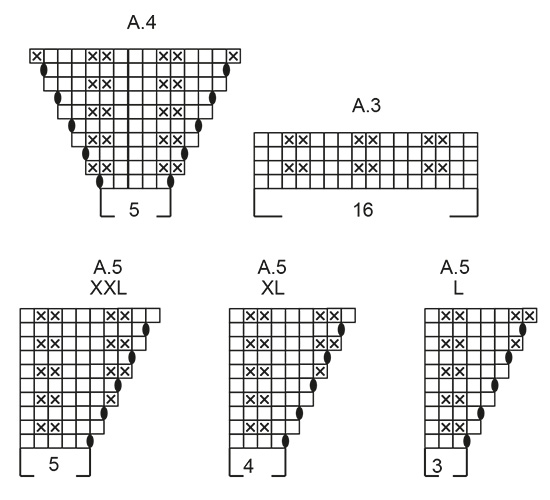 |
||||||||||
 |
||||||||||
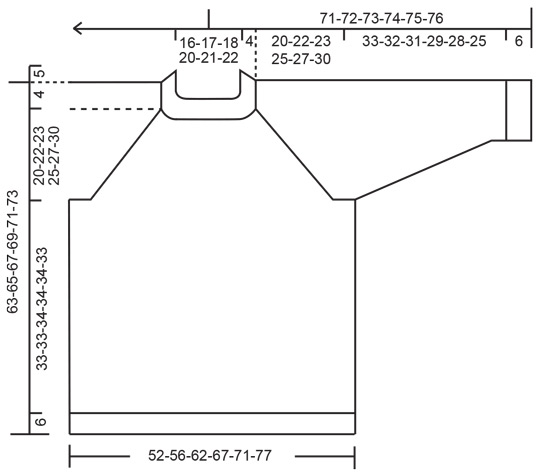 |
||||||||||
Have you finished this pattern?Tag your pictures with #dropspattern #winterowlsweater or submit them to the #dropsfan gallery. Do you need help with this pattern?You'll find 26 tutorial videos, a Comments/Questions area and more by visiting the pattern on garnstudio.com. © 1982-2025 DROPS Design A/S. We reserve all rights. This document, including all its sub-sections, has copyrights. Read more about what you can do with our patterns at the bottom of each pattern on our site. |
||||||||||









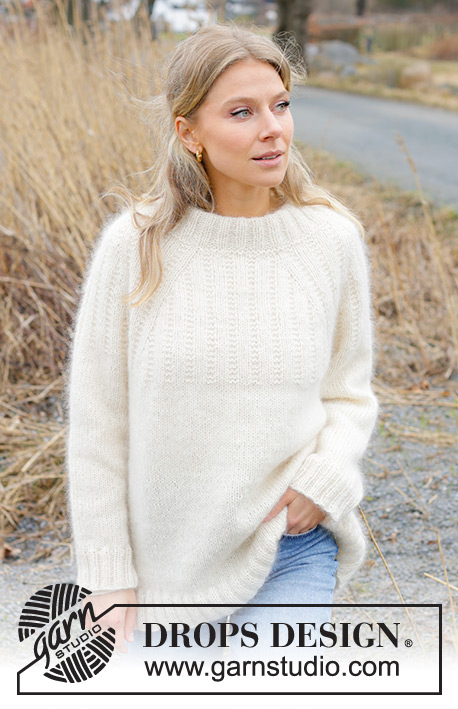




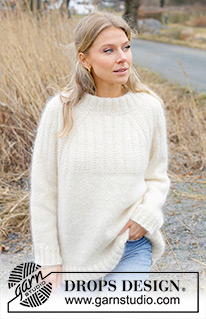

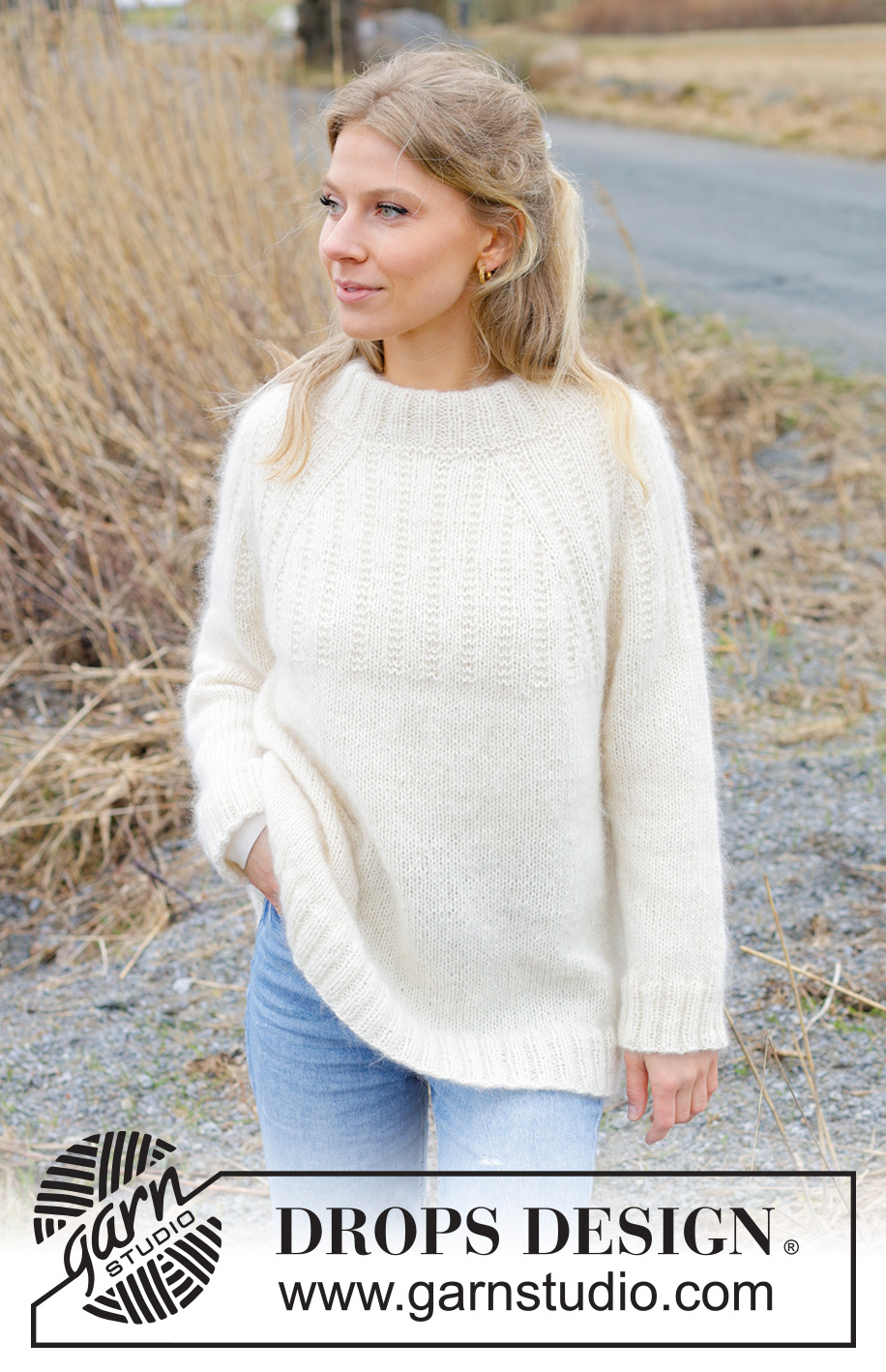
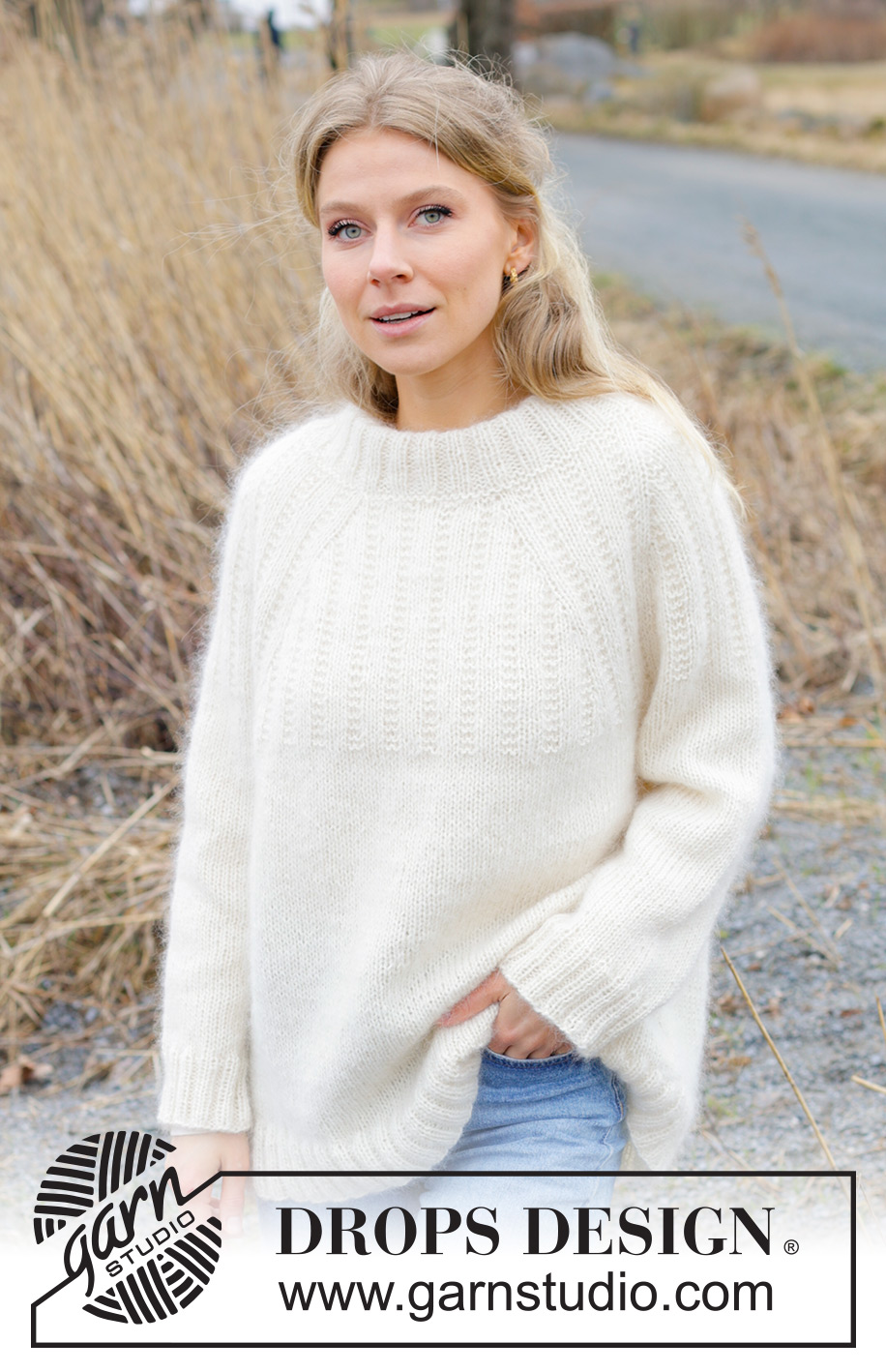
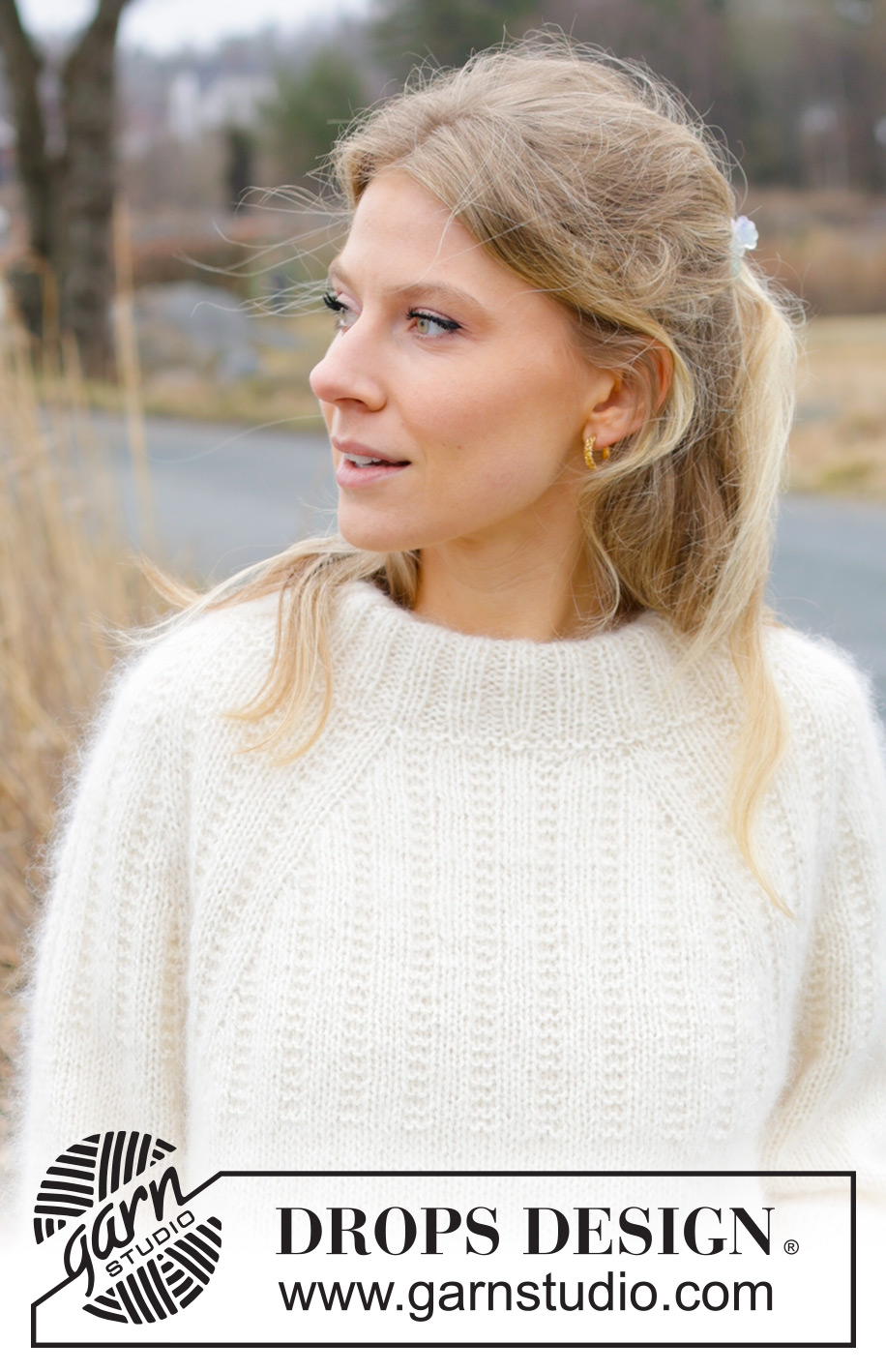
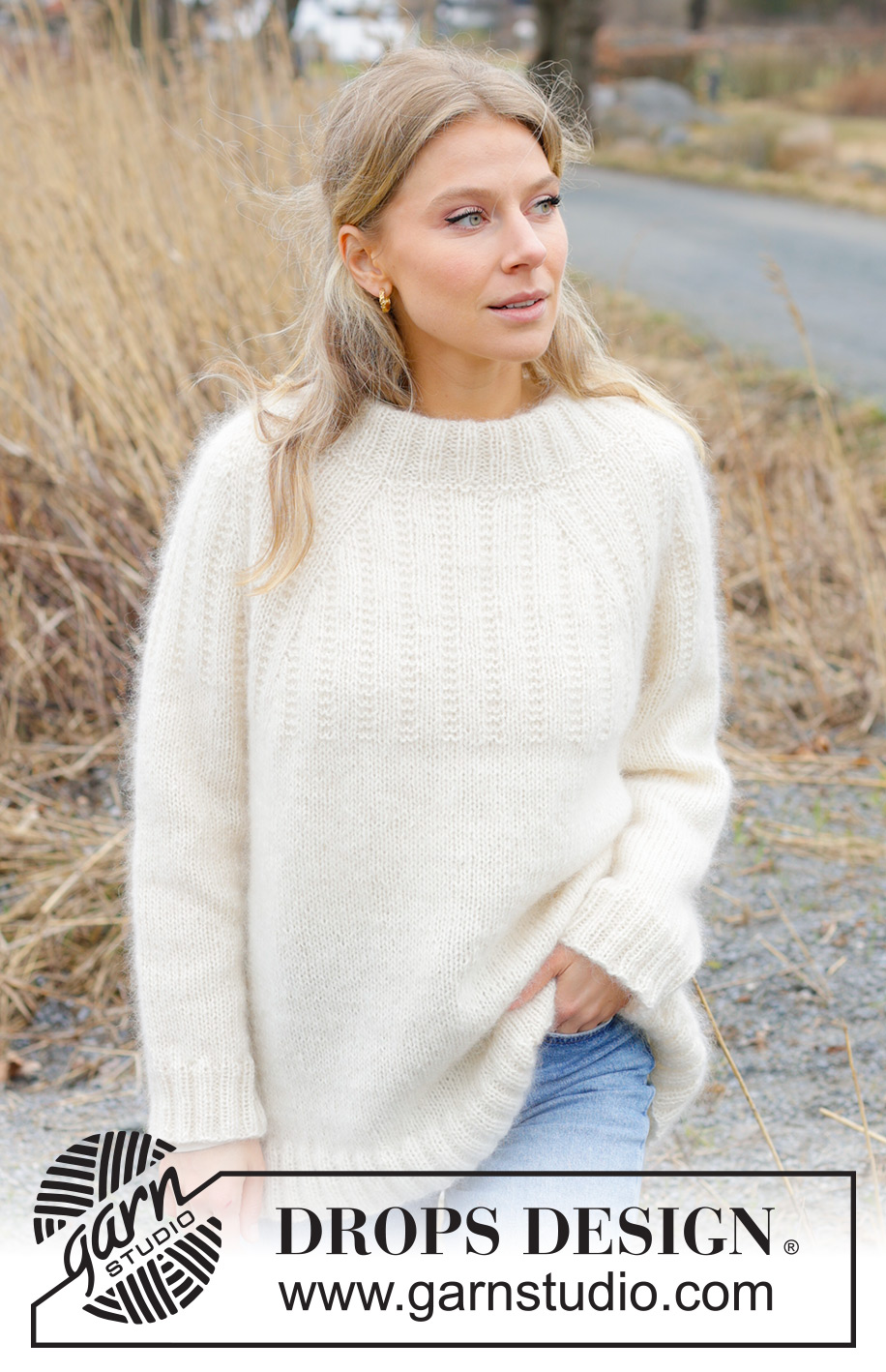



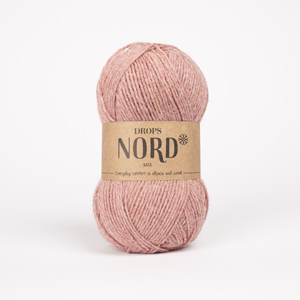














































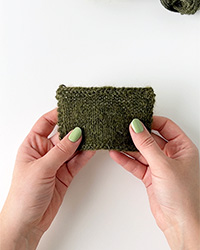

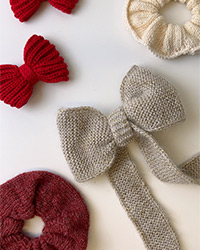
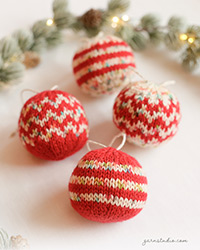


Post a comment to pattern DROPS 243-1
We would love to hear what you have to say about this pattern!
If you want to leave a question, please make sure you select the correct category in the form below, to speed up the answering process. Required fields are marked *.